Excerpts from Jim Conrad's
Naturalist Newsletter

from the April 15, 2012 Newsletter issued from the woods of the Loess Hill Region a few miles east of Natchez, Mississippi, USA
PHILADELPHIA FLEABANE
The seldom-mowed lawn here is prettily adorned with spring wildflowers, like a meadow high in the Alps in August. A pastoral scene below the big Cherrybark Oak appears above. Up close you can see who the white-flowered wildflower is, shown below:
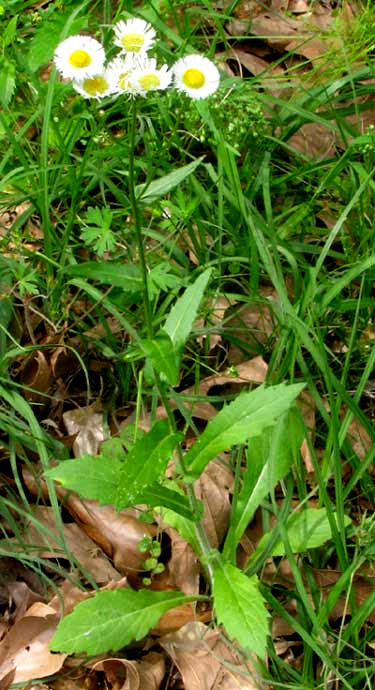
It's the abundant, knee-high "weed" known as the Philadelphia Fleabane, ERIGERON PHILADELPHICUS, a member of the Composite or Sunflower Flower. Its flowers look like those of asters. A close-up of one is shown below:
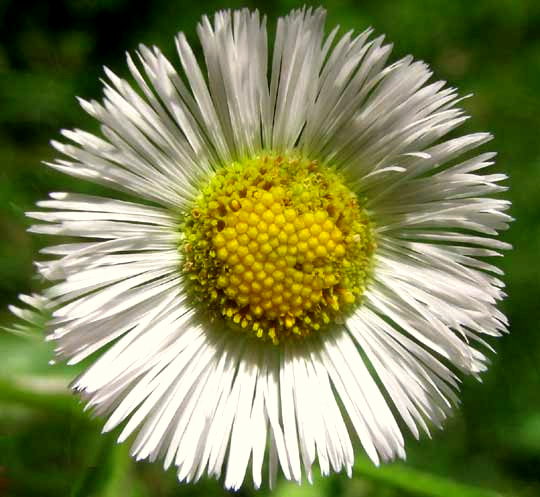
If you look behind that composite flower, however, you see something very un-aster-like, shown below:
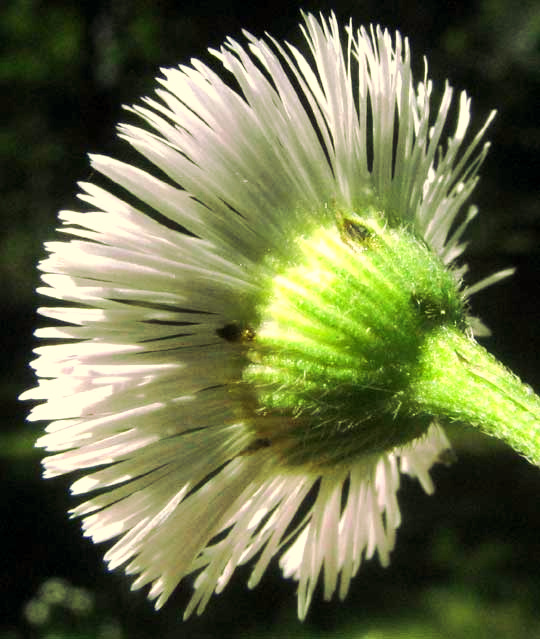
In that picture the white, slender things are corollas of the "ray flowers" at the head's perimeter. Below them, the slender, green items lined up side-by-side, forming a kind of cup (the involucre) are bracts. In asters, these bracts are of different lengths and overlap one another like roof shingles -- not situated side-by-side like these. In plant classification, this is a big deal.
You may find it interesting to see how this composite flower head has its yellow, eye-forming "disk flowers" crammed together, surrounded by ray flowers, in the longitudinal section across the head's center below:
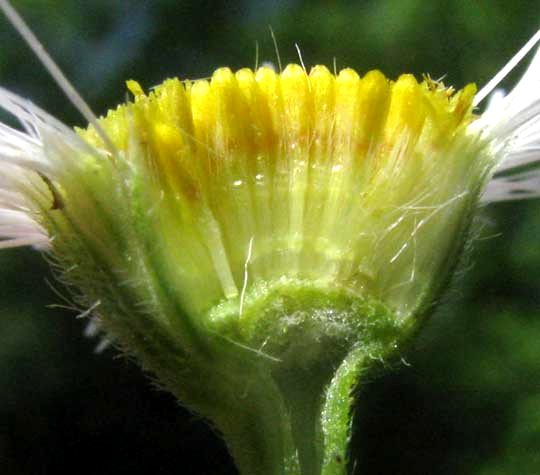
About 173 fleabanes -- species in the genus Erigeron -- are included in the online Flora of North America. Features distinguishing our Philadelphia Fleabane from all the others include its very hairy stem and leaves, and the way its leaf bases "clasp" the stem, as shown below:
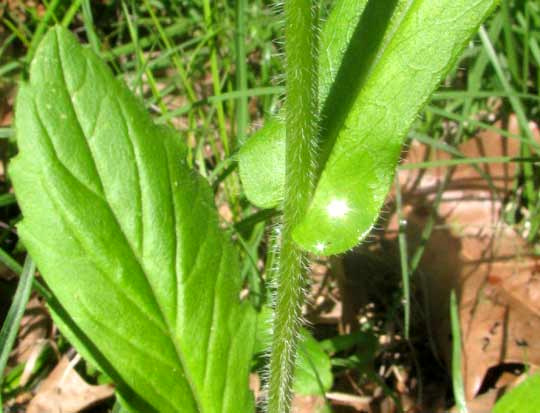
Philadelphia Fleabane is native North American, but it's spread into temperate areas worldwide to become a weed.
"Bane," when part of a plant name, means "poisonous," and at least one website says that "When you burn Fleabane it produces an oily smoke that repels insects like fleas. Tannins in Fleabane protect cuts from infection and promote skin-tissue healing. Also, the weed was used to soothe sore throats."
from the April 20, 2003 Newsletter issued from the woods of the Loess Hill Region a few miles south of Natchez, Mississippi; elevation ~200ft (~60m), ~N31.42°, ~W91.41°; USA
PHILADELPHIA FLEABANE
Along the paths around my trailer and along trails and roadsides throughout the plantation, right now an abundance of Philadelphia Fleabanes,is flowering. I can't see this plant without recalling summer days on the Kentucky farm, for the weedy shoulders of the gravel road passing by our farm at this time of year were always spectacular with millions of flowering fleabanes. Crushed fleabanes produce a not unpleasant odor, one like I'd imagine warm, soft yellow-greenness to smell. When I was a kid on the gravel road, sometimes the whole world smelled of fleabane.
The fleabanes' pungent odor suggests that they bear interesting chemicals. The word "fleabane" itself describes something able to "drive away fleas." On the Internet I find that "The whole-plant tea was used as a diuretic and an astringent. Folk uses include treatment of diarrhea, 'gravel' (kidney stones), diabetes, and painful urination. It was also used to stop hemorrhages of the stomach, bowels, bladder, kidneys, and nose. Additional historic uses include treatment of fevers, bronchitis, tumors, hemorrhoids, and coughs. Contact dermatitis may result from handling this plant. Caution is advised."
Since fleabanes are members of the Composite Family, the blossoms' yellow "eyes" are composed of dozens of yellow "disc flowers." Radiating from these "eyes" are 75 to a hundred slender white "ray flowers." If you need refreshing about the unique anatomy of Composite blossoms, take a look at my Composite Flower Page at www.backyardnature.net/fl_comps.htm.
The next time you see a fleabane, pluck off a flower, break it apart, smell its evocative odor, and see how elegantly each tiny flower is formed.